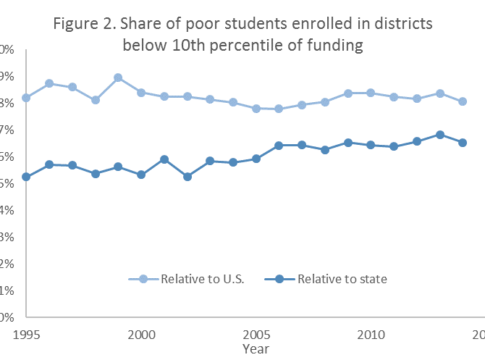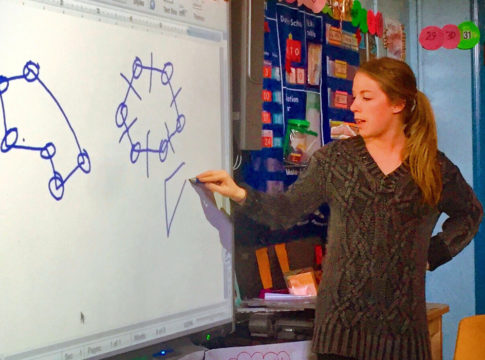As ESEA talk heats up, reform groups are tossing ideas on the table (e.g., see here, here, and here). We can debate the details, but most have some merit. Here’s the problem: even if our nation fully implemented most of the recommended legislation in the next decade, we still would be far behind other nations that made bolder changes years ago. In contrast, of course, many conservatives want to leave education up to state legislators, on whose watch K-12 education has plateaued and declined.
Is there a bolder alternative that might actually induce our nation to achieve widespread learning excellence?
Here’s a simple idea: put excellent teachers, the top 20 to 25 percent who achieve well over today’s “year of learning progress,” in charge of every child’s learning—consistently. Even with solid teachers who achieve a full year of progress, students who enter school behind stay behind, and those in the middle do not leap ahead. Moreover, the current teacher pool feeds the anemic principal pipeline, meaning excellent teachers are often pulled from instruction—or forced to work under inadequate leaders.
In our recent report, Seizing Opportunity at the Top, we suggest three major ways to generate the significant will needed to put excellent teachers in charge of every child’s learning. We must, at the federal or state level:
- Limit who can teach to top high school graduates, with further screening for behavioral competencies of excellent teachers;
- Offer large financial incentives from regular funding streams, for districts, schools, and teachers when they produce high-growth learning, up to and far beyond standards; and/or
- Create a new civil right to excellent teachers, one that parents and students can enforce legally when a child is behind standards, not making a full year of progress annually, or has not had an excellent teacher in a subject for two years running.
The only way to implement any of these reforms successfully, within budget and at scale, is to help excellent teachers increase their productivity: swap portions of excellent teachers’ time with digital instruction so they can teach more classes with similar or even smaller group sizes; let them delegate nonessential tasks to other adults; use digital tools to save time on instructional monitoring and planning; put them in charge of other teachers; and let the willing have more students to nurture under their strong wings. Find more discussion of these options in Opportunity at the Top and 3X for All. This is not new: Other excellent professionals, whose jobs and pay aren’t frozen into molds, started making these changes for themselves a half-century ago, developing differentiated teams and using technology to save time and eliminate error from routine work, leaving the best free to do the most complex tasks.
Public Impact, with help from teachers and others, will soon begin releasing designs that clarify how to make these changes in schools, within budget, and pay excellent teachers more for the additional children they reach. “How to” models will help, but without major policy changes to induce the will, all evidence is that schools simply won’t budge—not even the ones that already can (e.g., charter schools).
ESEA could help. At a minimum, it could:
- Require states to identify excellent teachers immediately (even if full-blown evaluation systems take longer to develop);
- Require reporting of the percentage of students reached by teachers at each effectiveness level, not just the percentage of teachers at different effectiveness levels—rewarding places that put excellent teachers in charge of more students, directly or through managed teams; and
- Make federal funding contingent on clearing barriers that keep excellent teachers from reaching more students, such as limits on their pay, class sizes, and non-teaching staff who could monitor digital instruction.
Seizing Opportunity at the Top lists the basic policies that states must change. Absent will-inducing provisions, though, even ESEA and basic state policy changes combined will be inadequate.
Policy and political leaders at all levels: We must stop haggling over how to pack our saddlebags while other nations board helicopters. Our nation needs us to step up. We need major action to induce the will to put excellent teachers in charge of every child’s learning.
– Emily Ayscue Hassel and Bryan C. Hassel, Public Impact





